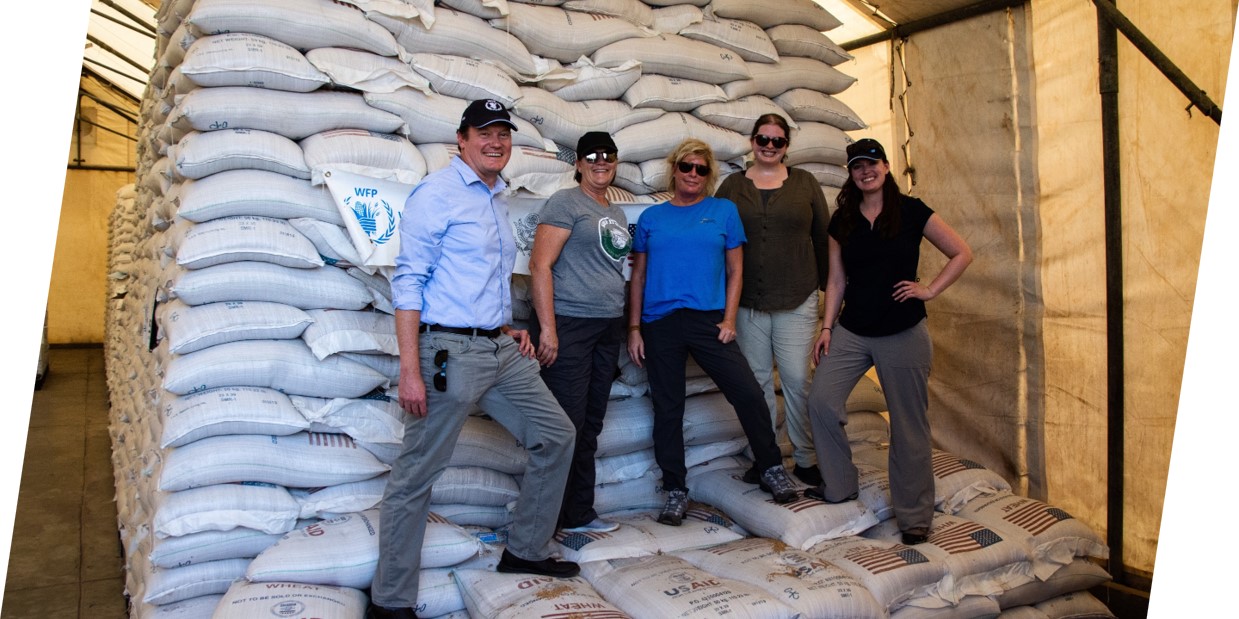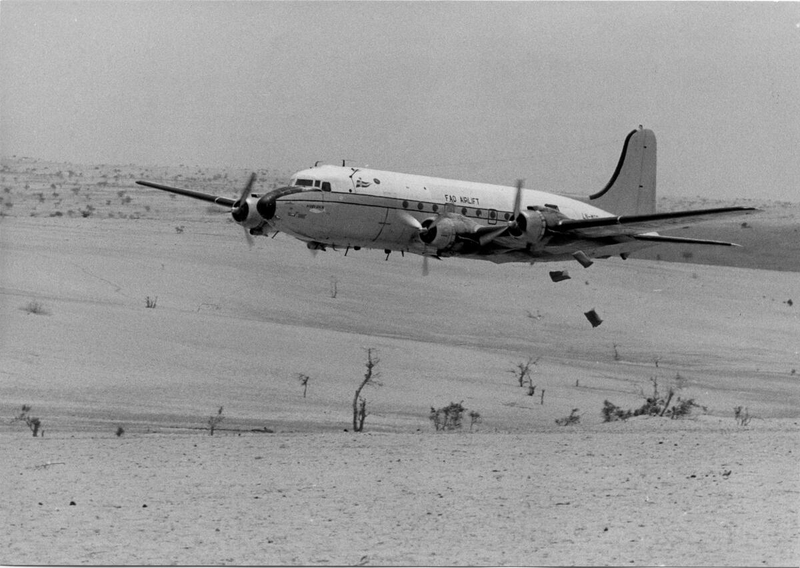From the United States to Yemen: 1 Millionth Ton of American Wheat Brings Relief and Hope

On November 26, the 1 millionth ton of wheat purchased by the United States government for global hunger relief efforts left Vancouver, Washington. The shipment is destined for the United Nations World Food Programme (WFP)’s operations in Yemen where 19 million people are severely hungry.
The United States Is a Global Food Security Leader
Today, the world faces the largest hunger crisis in modern history. Since 2016, the number of people facing extreme hunger has risen by over 200% – from 108 million to 349 million people today. The needs are sky-high.
The United States plays a vital role in meeting these historic needs: The U.S. sends more international food aid than any other country in the world and is also the U.N. World Food Programme’s largest financial donor. In 2021, the U.S. contributed nearly $4 billion dollars to the U.N. World Food Programme through direct financial support and in-kind commodity assistance (i.e., crops like corn, wheat and soybeans).

The two largest recipients of wheat under the U.S. Food for Peace program are Ethiopia and Yemen, where it’s often cooked into flatbreads.
American Wheat Helps Solve World Hunger
In 2022, for the third consecutive year, the U.S. shipped over 1 million tons of wheat to global hunger relief efforts. The 1 millionth ton of wheat was loaded aboard the African Halycon cargo vessel and left Washington state on Saturday, November 26. It is expected to arrive in Yemen in early January.
“The 1 millionth ton of wheat shows the generosity of the United States, including U.S. citizens’ willingness to support feeding (severely) hungry people,” said Dalton Henry, Vice President of Policy for U.S. Wheat Associates. “People in the U.S. have big hearts and genuinely see a need to step up to the plate when there are populations around the world that are experiencing hunger, whether that’s due to drought in Ethiopia or conflict in Yemen or any of the other dozens of countries that the U.S. has sent aid to.”
“This shipment also shows the generosity of U.S. farmers, as they produce an abundance of commodities that can be shared around the world,” Henry said.
The 1 millionth ton of American-grown, soft white wheat was sourced from Oregon, Washington and Idaho.

American farmers are key to eradicating global hunger. Shown here: In 2019, the U.N. World Food Programme facilitated a visit of American wheat farmers to Kakuma Refugee Camp and the port at Mombasa in Kenya.
The cost of the shipment was paid for by the Bill Emerson Humanitarian Trust (BEHT), an emergency funding reserve that enables the U.S. to respond to unprecedented food crises abroad. When the war in Ukraine began, it drove food prices and hunger levels to record highs so the U.S. government released all BEHT funds to provide urgently needed food assistance.
“Rather than pull back the total tonnage (of wheat) being shipped, the United States doubled down and essentially drew the full balance from a rainy-day fund,” Dalton explained. “We were able to release those funds to provide that accelerated level of wheat and other food donations.”
Alongside Congressional champions and concerned citizens on both sides of the aisle, World Food Program USA advocated for the release of these funds.

“The world is suffering from historic levels of food insecurity, which is being exacerbated by the impact of Russia’s war on global food supplies” explained Henry.
From 1812 to Today: America’s Legacy of Food Aid
This 1 millionth ton of wheat is one of the latest examples of America’s leadership in international food aid. The U.S. has long been a global leader in the humanitarian sector and was instrumental in creating the U.N. World Food Programme in the 1960s. Here’s a quick timeline:
1812: Under the leadership of President James Madison, the U.S. sent $50,000 dollars’ worth of wheat flour to Venezuela after the country suffered a devastating earthquake – equivalent to $1M dollars today. This was one of the first shipments of international food aid provided by the American people.
1943: The U.S.’ first major foray into multilateral food aid was through the United Nations Relief and Rehabilitation Administration (UNRRA), an extensive social welfare program spearheaded by President Franklin D. Roosevelt to provide food and other aid to countries ravaged by World War II.
1948: Devised by Secretary of State George Marshall and signed by President Harry Truman, the Marshall Plan provided almost $15 billion dollars (over $100 billion in today’s dollars) in U.S. assistance to support Europe’s recovery from World War II. A significant portion of the funds went to food aid and restoring agricultural production.

The U.S. was instrumental in creating the U.N. World Food Programme in the 1960s, but its legacy of humanitarian aid dates back even further.
1954: As crop surpluses mounted in the U.S. after World War II, President Dwight D. Eisenhower signed the Agricultural Trade Development Assistance Act (Food for Peace Act) which formalized the use of American farm products for lifesaving aid abroad. This was the first permanent U.S. food aid program and still exists today.
1960 – 1961: After the success of Food for Peace, President Eisenhower called for the creation of a global food aid program. In September 1960, he proposed to the U.N. General Assembly that a “workable scheme should be devised for providing food aid through the U.N. system.” By 1961, the U.N. World food Programme was officially established.
~
Today, the U.S. still leads the world in food aid contributions. To learn more and get involved in our advocacy work, click here.
Our work is only possible because of supporters like you. Every gift – no matter how small – fuels this lifesaving work and helps us build a world without hunger.




